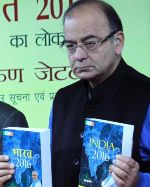
When it comes to the defence budget, there were three things that surprised many observers. First, in a break from tradition, the finance minister Arun Jaitley did not mention the outlay for defence in his budget speech to the Lok Sabha. Second, the budget documents had halved the eight demands of defence budget to four, rearranging them more logically into Revenue demand and Capital demand for defence services, defence pensions and another demand for all the other expenses under the defence ministry. And third, the numbers of the defence budget, for the first time since the mid-1980s, has also included defence pensions.
These are, however, insignificant issues compared to major concerns raised by the defence budget. The allocation for the next year is only 1.71 per cent of the GDP, perhaps the lowest since the 1962 India-China war. Even if defence pensions are included, the budget amounts to 2.26 per cent of the GDP, which is far lower than the 3 per cent of GDP recommended by the Parliamentary Standing Committee on Defence in its reports spanning a decade.
Related to the issue of overall defence allocation is the proportion of the budget earmarked for capital expenditure, which is used to buy weapons and military equipment. While the budget allocates Rs 82,332 crore for pensions and Rs 95,852 crore for salaries, it allocates only Rs 78,586 crore for capital expenditure by the defence services. A significant portion of that amount, to the tune of 60 per cent, is already committed to paying for weapon systems and military platforms already bought by the defence services. Even then, the defence ministry could not spend 13.5 per cent of its capital budget for the defence services this year.
This limitation of non-availability and non-expenditure of funds for new procurement is reflected in the fact that the defence ministry has been unable to sign many new major deals this year. Rafale fighters, M-777 artillery guns and Russian frigates are prime examples of equipment where deals could not be signed.
A lot of focus in defence procurement in recent years has been on bureaucratic procedures and decision making. The defence ministry has also been very vocal about the Make in India scheme, with little to show for as results. Revision of Defence Procurement Procedure and other related policies are important but perhaps not critical to the problems. It is much more about the resources available to the defence ministry to buy big-ticket equipment.
In simple words, the defence budget may seem high in numbers, but a large portion is committed to just paying the soldiers and ex-servicemen. There is little money available to buy new weapons, and even among that, that money is already committed to equipment under supply. This puts a serious question mark about India’s national security plans. Let’s hope the parliament will devote time to raise that question when it discusses the union budget.







Leave a Reply
You must be logged in to post a comment.